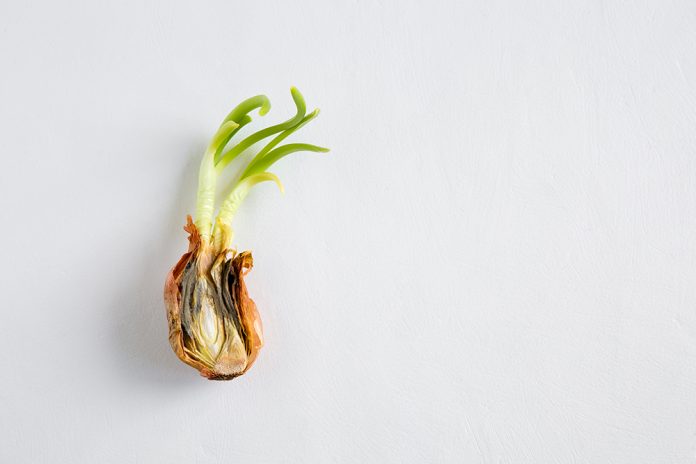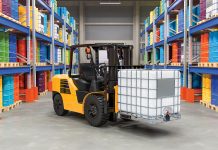Dr Sarah Hickingbottom, CEO, BioVale
Food is big business in the UK. Yet globally about 1/3rd of food production is never eaten. Talk about waste. Some of it rots in our fridges but much is lost on the farm or at the food manufacturer.
Imagine what we could do if instead of waste, we saw chemical opportunity? Instead of straight lines with land-fill and incinerators, we saw circles. A Circular Economy. The UK and world’s chemicals industry achieving net-zero and minimising the use of virgin raw materials. We may think we’re being future-thinking, but for centuries people have said (to paraphrase) “today’s waste is tomorrow’s raw material”. In fact, soap was first produced at industrial scales to make money from waste vegetable oils and animal fats. An industry which morphed into today’s oleochemical sector supplying the chemicals industry with millions of tonnes of fatty acids, fatty alcohols, glycerine and biofuels. Even today virgin, agricultural oleochemical raw materials are supplemented with used cooking oil, waste animal fats and the fractions of vegetable oil rejected by the food industry for their undesirable technical properties.
Whilst our first step should always be to eliminate the production of waste wherever and whenever possible, the second step is to view waste as a feedstock. It is not a problem to dispose of, but an asset to exploit. But despite such opportunity, we still live a world full of waste. If we want to feed everyone affordably, tackle climate emergency, achieve net-zero and face water/resource challenges head-on, we must maximise the value we extract from our precious land. And that includes making chemicals, materials or even pharmaceuticals from food waste and thereby minimising the use of virgin petrochemicals (or virgin biobased feedstocks).
Indeed, while we’re talking waste, it’s useful to highlight that waste-as-a-feedstock includes waste from a myriad of sources, such as agricultural production, water treatment, textiles/fashion, plastics, industrial gases, municipal solid waste (known as MSW which is household waste) as well as industrial processes.
What can be done with these waste-streams? Combined with chemistry, biology and engineering, the development of the industrial biotechnology toolkit means, broadly, we are constrained only by our imaginations. For example, businesses – multinational, national, small and start-ups – are working in Yorkshire to capture carbon dioxide; to convert the captured carbon dioxide into animal feed; to remove colour from plastics to facilitate their recycling; to convert difficult to handle MSW into usable fermentable pellets; to take potato peelings and manufacture polymers. Those are a few examples and our Anaerobic Digestion (AD) ambition is not yet sated as we consider opportunities to use AD beyond generation of gas for power industrially, but to see it as a technology to produce any number of chemicals from a biomethane platform.
The possibilities created by technologies being developed seem to be endless, such as LanzaTech’s use of waste industrial gases for fermentation to produce platform chemicals from otherwise unusable sources. Or the chemical engineering being pioneered to convert difficult to handle MSW into syngas suitable for fermentation into fuels or chemicals, such as that of the University of Birmingham and their FletJet project which recently was selected from over 300 bioeconomy projects across the EU as having the ‘most potential for commercial scale’.
Emerging opportunities include the large-scale recycling of plastics; incorporating circular principles and biotechnology with the chemicals industry; renewable energy; and green hydrogen supply chains. Arguably, to optimise the value of our waste-streams, the renewable energy sector should enable us to use renewables to supply our energy, heat and power demands whilst reserving waste-streams for the production of ‘stuff’ i.e. chemicals, plastics and other materials.
There are challenges and risks but first let’s take a moment to recognise the strength of the possibility as the chemicals industry enters a new age. The age of chemurgy (an old word, all but forgotten now, but the technical name for the branch of chemistry focused on converting agricultural products into chemicals). At BioVale, we’re working with the scientists, agriculturists, chemists and entrepreneurs creating the technologies and businesses best placed to realise these possibilities. For example, BioVale’s Significant Interest Group in Anaerobic Digestion, regularly brings together scientific research, industry and farmers to swap best practice, share ambition and work to increase productivity, including downstream chemicals. And our sister organisation – the Biorenewables Development Centre (BDC) – is an open-access, scale-up centre with the equipment and experts needed to make using waste as a feedstock possible. The BDC has proven the concept of using pasta-cooking water to produce anti-fungal drugs; bread waste to produce antibiotics; and even ice-cream by-products to produce bioethanol.
Now we need to work together to develop these concepts into industrial best practice. Interested? Get in touch at www.biovale.org, or better yet, work with us to build a circular chemicals industry with net-zero and sustainability as core drivers.









